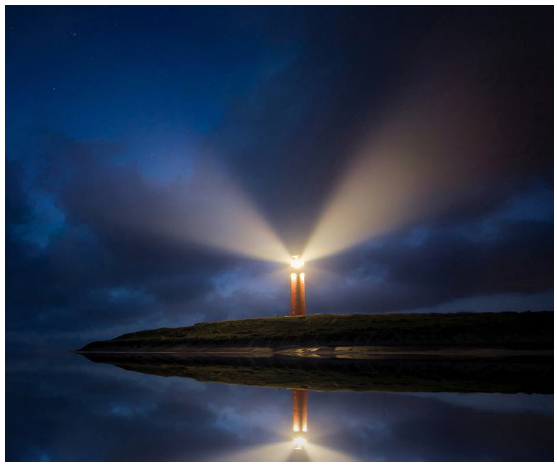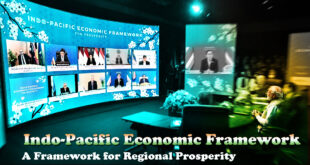The Union government has constituted a committee headed by former President to explore the possibility of conducting simultaneous elections to the Lok Sabha, the Legislative Assemblies, municipalities, and panchayats. The proposal has been under consideration by the Government of India since 2014.
Pros and Cons of One Nation, One Election
| Pros | Cons |
| It will save money. | It will be difficult to implement. |
| It will reduce disruption. | It could lead to voter fatigue. |
| It will strengthen the federal system. | It could give an advantage to the ruling party. |
| It will make it easier for the government to implement its policies. |
It could lead to a concentration of power in the hands of the central government. |
| It will give voters a stronger voice. | It could undermine the autonomy of state governments. |
About the committee
- The Centre on Saturday (September 2) set up a committee to examine various aspects,
both legal and logistical, for implementing the “one nation, one election” idea. - The Law Ministry has outlined seven terms of reference for the eight-member panel
headed by former President Ram Nath Kovind and including Union Home Minister. - One of the terms of reference is to examine if a constitutional amendment to facilitate
simultaneous polls would have to be ratified by the states - While some amendments to the Constitution can be made like any ordinary legislation,
others need more rigorous methods.
In India, Article 368 of the Constitution deals with the power and process of amending the
Constitution. The interpretation of this provision has been fraught, leading to tensions between
Parliament and the judiciary since 1951.
Article 368 lists six parts of the Constitution that have an additional safeguard for amending
them.
- Article 54 and 55, dealing with the election of the President of India.
- Article 73 and 162, dealing with the extent of executive power of the Union and states.
- Articles 124–147 and 214–231, which deal with powers of the Supreme Court and the
High Courts - Article 245 to 255, dealing with the scheme of distribution of legislative, taxing, and
administrative powers between the Union and the states. - Article 82-82, dealing with the representation of states in Parliament.
- Article 368 itself.
| Daily mains Answer writing practice: |
| Critically Analyse the implications of ‘One Nation, One Election’ on the federal nature of the state. |
 INDIA SAUDI RELATIONS
INDIA SAUDI RELATIONS
The recent trends in Indo-Saudi relations have shown a visibly growing camaraderie towards their bilateral engagements. Saudi Arabia is increasingly looking to deepen ties with India due to its market potential, demographic structure, infrastructure, defence capabilities, soft power capabilities and strategic relevance. Both
countries reiterated their mutual desire to develop as knowledge-based economies based on advances in the areas of information technology, space science and other frontier technologies.
Defence cooperation
- Delhi declaration, 2006
-
- Actively cooperate to fight the menace of terrorism and other transnational
crimes in a sustained and comprehensive manner
- Actively cooperate to fight the menace of terrorism and other transnational
- Riyadh declaration, 2010
-
- Elevated bilateral relations to strategic partnership based on complementarity
and interdependence
- Elevated bilateral relations to strategic partnership based on complementarity
-
- Strategic Partnership Council, 2019
-
- A holistic institution covering various sectors of cooperation covering
economic, security, defence, strategic and political spheres. - It has two pillars
-
- Political-Security-Socio-Cultural: co-chaired by the Indian External
Affairs Minister and the Saudi Foreign Minister. - Economic and Investment: co-chaired by Commerce & Industry
Minister on Indian side and Energy Minister on Saudi side.
- Political-Security-Socio-Cultural: co-chaired by the Indian External
- A holistic institution covering various sectors of cooperation covering
Economic cooperation
- Saudi Arabia is India’s fourth largest trading partner.
- More than 18% of India’s crude oil imports are sourced from Saudi Arabia.
- During FY22, bilateral trade was valued at US$29.28 billion.
- Saudi Arabia’s internal transition towards modernisation such as ‘Vision 2030’ has
opened economic opportunities for international players including India. - INDIA MIDDLE EAST EUROPE ECONOMIC CORRIDOR
-
- to connect India, West Asia, and Europe through an economic corridor.
- Will aid to increase economic growth, energy sector and digitisation,
-
- Saudi Arabia was invited to become a member of the BRICS during the Johannesburg
summit. - Both sides agreed to work on the India-GCC Free Trade Agreement and to remain a
reliable partner and exporter of crude oil supplies.
Energy security
- Saudi Arabia’s strategic location in West Asia along with its global oil reserves makes
it an important partner for India. - Signed MoU on cooperation in energy sector with focus on support for India’s efforts
for energy transition and combating climate change. - Proposed US$44 billion investment in ‘West Coast Refinery & Petrochemicals Project’
in Maharashtra, which is being jointly built by Saudi Aramco, Abu Dhabi National Oil
Company, and an Indian consortium. - In the renewable energy sector, Saudi Company Al- Fanar has a controlling stake in
600MW Wind Power projects in India. - Discussions to upgrade energy ties to “comprehensive energy partnership”
Socio cultural exchanges
- Saudi hosts approximately 2.2 million strong Indian community is the largest expatriate
community in the Kingdom. - The annual Hajj pilgrimage is another important component of Indo-Saudi bilateral
relations.
Strategic Significance
- The stability and security of the Gulf region and the Indian subcontinent are closely
interlinked. - Of strategic importance after Saudi Arabia ended hostility with Iran through a deal that
was negotiated by China. - From an Indian perspective, the main challenges to regional stability include the
ongoing civil war in Syria, US-Iran hostility and the Palestine issue. - Cyber security and maritime security are other major issues in the region. In 2021, India
and Saudi Arabia started their first-ever Naval joint exercise called the Al-Mohed Al- Hindi Exercise.
| DAILY MAINS ANSWER WRITING PRACTICE |
| In light of recent developments, discuss about India’s growing relations with the West Asian countries. |
Other NEWS:
| Kashmir Valley’s growers are anxious as import duty is relaxed on American apples |
|
| What are picoflare jets? |
|
| Ban on firecrackers to return; allow green crackers |
|
 Reciprocity is easily visible in transmission of light, where it can pass from point A to B and vice- versa with no objection.
Reciprocity is easily visible in transmission of light, where it can pass from point A to B and vice- versa with no objection.
 Chinmaya IAS Academy – Current Affairs Chinmaya IAS Academy – Current Affairs
Chinmaya IAS Academy – Current Affairs Chinmaya IAS Academy – Current Affairs



